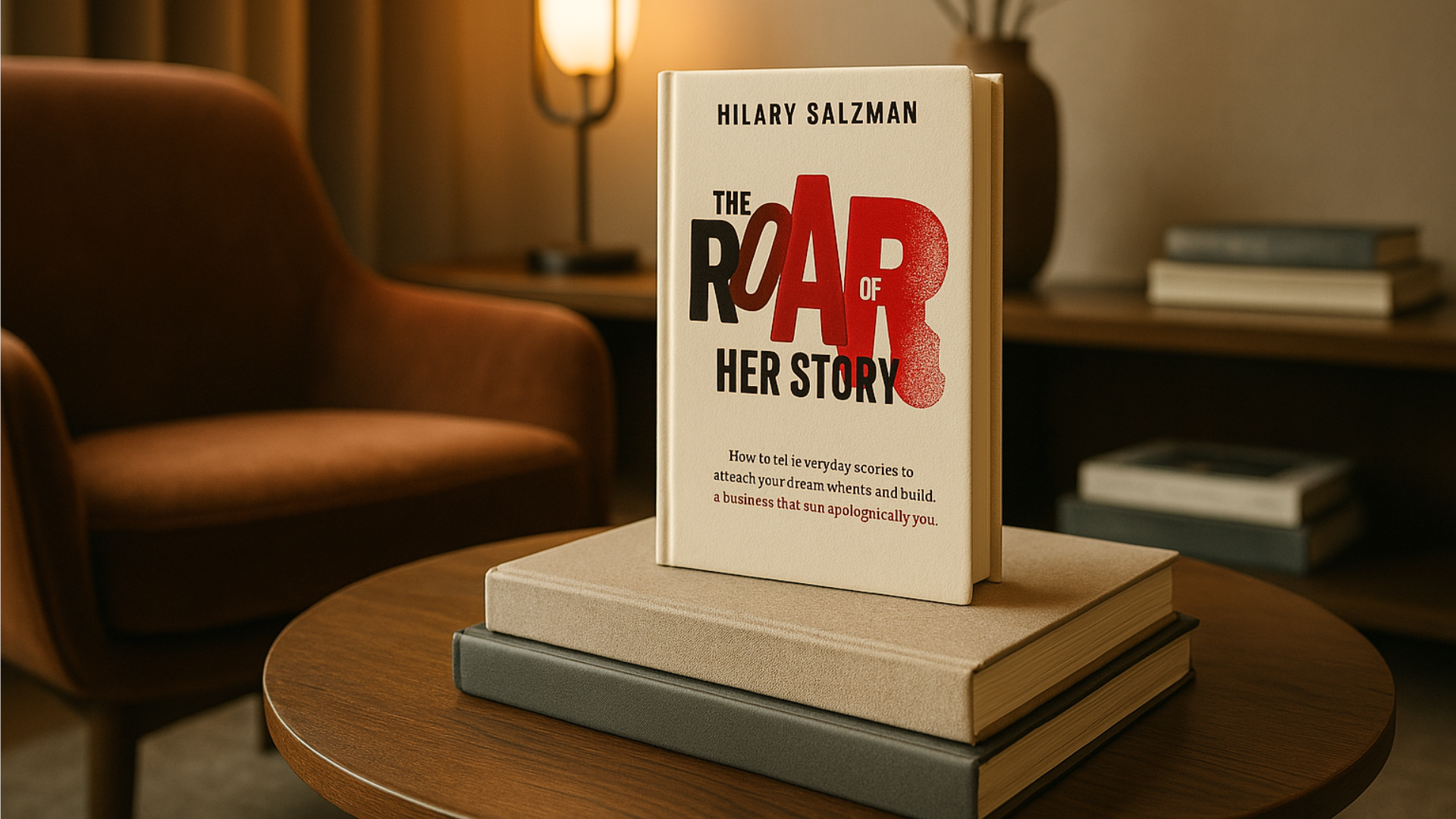Why Storytelling Is Essential for Women in Business

Book Review: The Roar of Her Story by Hilary Salzman
A bold, grounded invitation for women to use their voices and stories to build connection, confidence, and meaningful business growth
In The Roar of Her Story, Hilary Salzman invites women to step into visibility by embracing their personal stories. This is not a technical manual on storytelling. It is an emotionally honest guide that encourages readers to connect with their lived experiences and turn them into meaningful business narratives. With humour, vulnerability, and experience, Salzman offers a pathway for women who want to use their voice with confidence, especially in spaces where they may have felt invisible or uncertain.
This is a book for anyone who has ever questioned whether their story mattered. Salzman answers with a firm yes. Your story is your most powerful tool for connection and clarity.
What the book promises
The Roar of Her Story promises to help women entrepreneurs move past self-doubt and silence by embracing storytelling as a natural part of their business communication. Salzman does not offer a rigid formula or one-size-fits-all method. Instead, she extends a warm, straightforward invitation to bring more of yourself into your work. The book encourages readers to build trust with their audience by sharing truthfully and showing up with their full selves.
It also promises more than communication advice. Salzman proposes that storytelling is a deeply human act that builds resilience, fosters empathy, and helps women reclaim their confidence in business and beyond.
What the book delivers
Salzman delivers on this promise by guiding readers through the emotional and practical dimensions of using their voice. Each chapter blends insight with encouragement. There are stories from Salzman’s own business journey, reflections on visibility and self-worth, and thoughtful prompts designed to help readers begin speaking from a place of truth.
The writing feels like a conversation rather than instruction. Salzman shares her missteps, her fears, and her personal evolution with honesty and humour. Rather than present herself as an expert with all the answers, she takes the role of a guide walking alongside the reader. This creates a tone of trust and mutual respect.
The book’s later chapters move into strategy, showing how stories can shape content, connect with ideal clients, and support values-aligned growth. These sections are helpful without being prescriptive. Salzman leaves space for the reader to experiment and adapt the ideas to their own voice.
Style and structure
The tone of the book is candid, conversational, and emotionally intelligent. Salzman writes as she speaks. Her style includes personal anecdotes, rhetorical questions, and moments of humour that keep the pace engaging. She avoids jargon and keeps her ideas grounded in real-world examples.
Each chapter includes a reflective prompt or gentle action step. These features invite readers to pause and consider how their own voice wants to emerge. The structure is flexible. Readers can move through the book in order or dip into whichever section speaks to their current needs.
The writing is informal, but not careless. Salzman’s clarity and intention are evident in how she builds trust with her audience and makes the work of storytelling feel approachable and worthwhile.
Where the book shines
The book shines most brightly in its emotional insight. Salzman understands how difficult it can be for women to feel safe using their voice, especially in professional spaces. She names the fear of being too much or not enough and responds with warmth and courage. Rather than telling readers to overcome these fears, she makes space for them and offers a path through.
Another strength is her rejection of polished, overused marketing templates. Salzman argues that your lived experience is what your audience is most drawn to. She encourages storytelling that feels honest and grounded in everyday life. This shift can be powerful for women who are tired of performing or filtering themselves to fit into outdated business norms.
Her stories feel real and generous. They are not shared for attention, but to offer companionship. By being transparent about her own process, she creates a sense of shared humanity that builds connection and trust with the reader.
Light limitations
The casual, conversational tone may not appeal to every reader. Those who prefer a more formal or structured style might find the writing less direct or more meandering than expected. Salzman’s approach is rooted in authenticity rather than polish. This will resonate for many, though it may not suit readers looking for technical instruction or linear planning.
Some concepts, particularly around voice and visibility, are more intuitive than tactical. Readers brand new to content creation may want more guidance on how to apply these ideas in practice. A few frameworks or diagrams could have added clarity for visual learners.
Finally, while the book is deeply attuned to the emotional experience of women in business, not all readers will share the same cultural, professional, or social context. Salzman acknowledges her own privileges, but some examples may need adaptation for different audiences.
Final thoughts
The Roar of Her Story is more than a book about storytelling. It is a steady, affirming companion for women ready to show up with more truth and less fear. Hilary Salzman writes with compassion, clarity, and conviction. She understands the cost of silence and the power of sharing what is real.
This book does not ask for perfection. It asks for honesty. It meets readers who are busy, burned out, or unsure, and reminds them that they already carry what they need. Their voice and their story.
Highly recommended for women entrepreneurs and professionals seeking to reconnect with their voice and values through emotionally grounded storytelling.